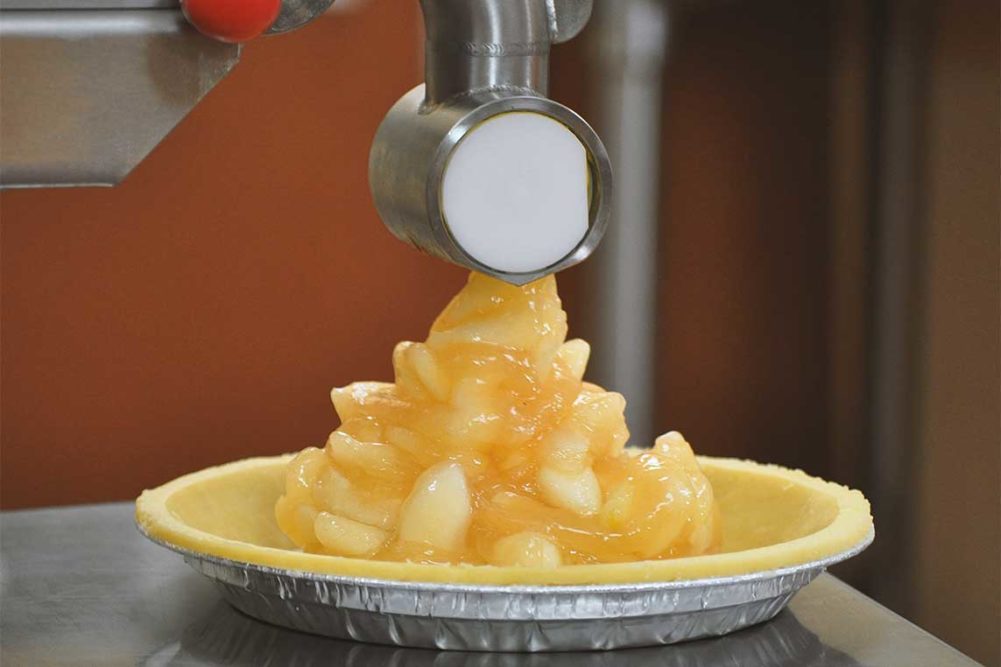The demand for small pies and sometimes complex ones has created a need for flexibility in the pie production line, which is typically a straightforward process.
“All automated pie production starts with a base, then a filling is deposited and a top lid is placed to close the pie,” said Hans Besems, executive product manager, AMF Tromp, an AMF Bakery Systems brand.
Opportunities for versatility lie in the depositing of fillings and any decoration after the topping process that bakers can use to distinguish their pies from the competition.
“Dedicated lines are the most efficient way to produce large quantities of pies for producers who have very large runs of relatively few SKUs,” said Mauricio Nahum, international applications manager, Unifiller Systems. “However, we see more and more demand for equipment that can handle production in a more flexible way.”
Switching pie sizes requires depositors that can make the change quickly while maintaining accuracy. AMF Tromp’s depositing solutions, like the Unimac Depositor, for example, provide accurate depositing for both liquid and semi-liquid doughs and batters, opening up a more diverse range of products.
Servo technology helps operators make these precise deposits across a wide range of weights. Handtmann’s filling depositors use this technology in its flow divider to deliver the exact amount of filling in each deposit across the entire width of the system. Depending on the size and weight of the finished product, that can be up to 24 pies across.
[Related reading: Flexible lines open up options for pie innovation]
“Handtmann’s patented vane cell technology is also very effective at gently handling full slices of apples, peaches or any large particles present in the filling such as full berries and nuts that are used in the most sophisticated and homemade-style pies,” said Cesar Zelaya, bakery sales and technology manager, Handtmann.
Servo-driven technology has opened up a world of possibilities on pie lines. By modifying some of its traditional technology with servo controls, Colborne Foodbotics has enabled pie bakers to create products that once were not possible with automation.
“We can offer unique lattice options, handmade appearance trim patterns and high-end filling depositors,” said Rick Hoskins, chief executive officer, Colborne Foodbotics. “The servo technology cuts changeover times in half. What used to be mechanical adjustments is now push-button changeovers.”
Mr. Hoskins explained that a traditional pie line uses a line shaft with a series of mechanical links that required significant timing to get production just right. Bakers could also have issues adapting devices to the line to automate different tasks.
“Now that we have independently servo-driven modules, it’s very easy to add and adjust these devices to do more automation tasks on the same line,” he said. “In addition, this created a drastic reduction in maintenance and operating costs due to the simplified designs that are less mechanical.”
This article is an excerpt from the December 2020 issue of Baking & Snack. To read the entire feature on pie processing, click here.





